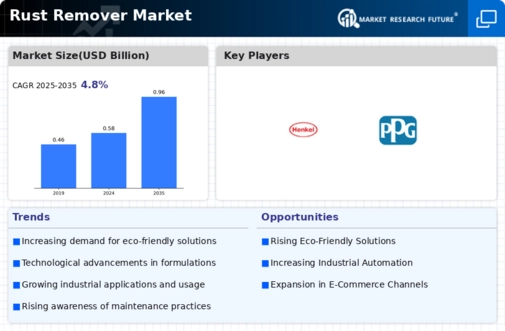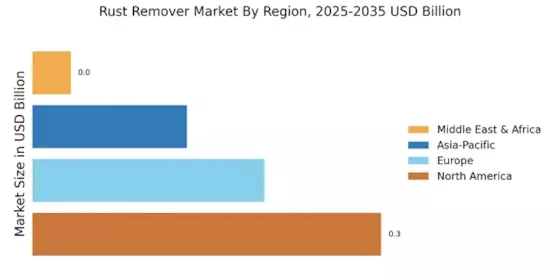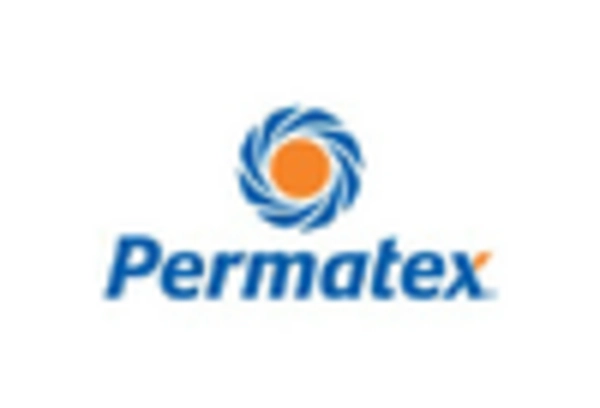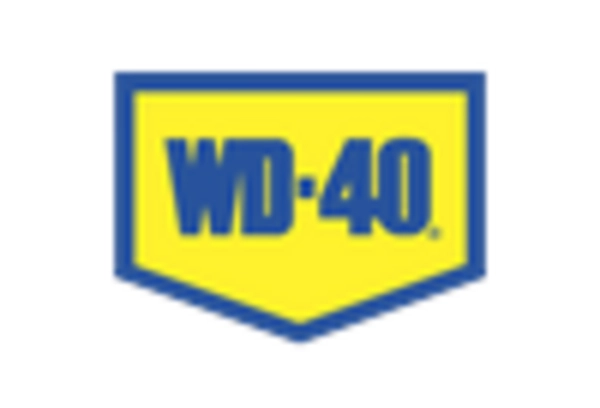The Rust Remover Market is currently characterized by a competitive landscape that is both dynamic and multifaceted. Key growth drivers include increasing industrial activities, a rising focus on maintenance and repair, and heightened consumer awareness regarding product efficacy and safety. Major players such as Rust-Oleum (US), WD-40 Company (US), and 3M (US) are strategically positioned to leverage these trends. Rust-Oleum (US) emphasizes innovation in product formulations, focusing on eco-friendly solutions, while WD-40 Company (US) has been expanding its product line to include specialized rust removers tailored for various applications. 3M (US), on the other hand, is concentrating on technological advancements in its rust removal products, enhancing performance through research and development. Collectively, these strategies contribute to a competitive environment that is increasingly focused on sustainability and product differentiation.
In terms of business tactics, companies are localizing manufacturing to reduce costs and improve supply chain efficiency. This approach is particularly evident in the Rust Remover Market, which appears to be moderately fragmented, with several players vying for market share. The collective influence of key players is significant, as they not only drive innovation but also set industry standards that smaller competitors often follow. The competitive structure is evolving, with larger companies acquiring niche players to enhance their product portfolios and market reach.
In August 2025, Rust-Oleum (US) launched a new line of biodegradable rust removers, which reflects a growing trend towards environmentally friendly products. This strategic move is likely to resonate with consumers who are increasingly concerned about the ecological impact of traditional chemical solutions. By positioning itself as a leader in sustainable practices, Rust-Oleum (US) may enhance its brand loyalty and capture a larger market share.
In September 2025, WD-40 Company (US) announced a partnership with a leading automotive manufacturer to develop a co-branded rust removal product specifically designed for automotive applications. This collaboration not only expands WD-40's market presence but also aligns with the company's strategy to penetrate niche markets. The partnership is expected to enhance product visibility and drive sales, particularly among automotive enthusiasts and professionals.
In July 2025, 3M (US) unveiled a new rust removal technology that utilizes advanced nanotechnology to improve efficiency and reduce the environmental footprint of its products. This innovation is indicative of 3M's commitment to research and development, positioning the company as a frontrunner in the market. The introduction of such cutting-edge technology may set new benchmarks for performance and sustainability in the rust remover segment.
As of October 2025, current competitive trends in the Rust Remover Market are increasingly defined by digitalization, sustainability, and the integration of artificial intelligence in product development. Strategic alliances are becoming more prevalent, as companies recognize the value of collaboration in enhancing innovation and market reach. Looking ahead, competitive differentiation is likely to evolve from traditional price-based competition to a focus on innovation, technological advancements, and supply chain reliability. This shift suggests that companies that prioritize these aspects will be better positioned to thrive in an increasingly competitive landscape.


















Leave a Comment